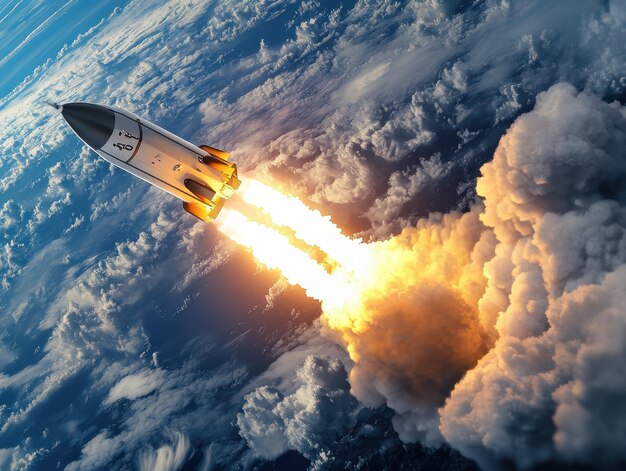Shrouded in secrecy and soaring through the final frontier, the U.S. Space Force’s X-37B spaceplane is redefining the boundaries of covert space operations with maneuvers so advanced, they could reshape the future of warfare and exploration.
The top-secret X-37B space jets would do ‘never-before-seen maneuvers’ as they approach Earth. The space jet X-37B has for the first time in history, ever performed maneuver of its kind as it approaches Earth.
The new maneuver by the X-37B may most likely enable the spaceship to avoid detection and even covertly do low-passes over Earth, though what purpose the X-37B will be used for is still unknown.
According to the U.S. Space Force, when it will reach Earth’s atmosphere with its secret experimental spacecraft, it will utilize a novel type of specialized braking method.
Boeing developed the classified, unmanned X-37B spaceplane when it was under contract to the US Department of Defence (DoD). At least we now know that the ship has been used as a platform to study how solar radiation impacts seeds in the past, although everything about the missions are classified. According to news articles in The New York Times and The Guardian, it could potentially test some new military surveillance technology.
The X-37B would then perform a maneuver known as “aerobraking”: It will drop into Earth’s atmosphere for a controlled entry to act on its orbit without burning too much of the precious fuel.
Secretary of the Air Force Frank Kendall said, in one statement: “This innovative and effective set of maneuvers demonstrates the commitment of the Space Force toward achieving groundbreaking innovation as it conducts national security missions in space.”
Thanks to the tests of aerobraking, the X-37B may be able to sharply and quickly change its orbit, which will apparently be impossible for other countries to follow it for a while. Speaking at the Aspen Security Forum in 2019, former US Secretary of the Air Force Heather Wilson said that, according to Military.com, the X-37B is probably doing this on “the far side of the Earth from our adversaries,” where they could not predict its trajectory with a degree of certainty.
Launched on a SpaceX Falcon Heavy rocket, the seventh mission of the X-37B, or OTV-7, was put into orbit in December 2023. It is operated by the US Department of the Air Force Rapid Capabilities Office, but is developed by the Air Force office which strives to innovate through military technology, together with Space Force.
Operating the reusable spaceplane in new orbital regimes was one of several objectives when the U.S. Space Force mission launched, according to personnel on the program in its press kit regarding the launch. The spacecraft has been orbiting Earth at a very high elliptical orbit-an oval path-taking the spaceplane as far outward as about 22,210 miles (35,750 km) and within a little more than that from Earth’s surface-along the OTV-7 mission. Previous observations of the X-37B have been captured as low as 185 miles above Earth.
Little is known about the X-37B, which has spent 15 years under test. The remotely controlled ship, measuring 29 feet (9 meters) in length and 9.5 feet (3 meters) in height, was launched into orbit by rockets, traveling from just a few hundred miles to tens of thousands of miles over Earth. At the end of every flight, the vehicle lands on a runway-representing a reusable piece of technology, like a little space shuttle.
One exception is the X-37B’s service module, which holds some of the spacecraft’s technical equipment that is programmed to be jettisoned from the vehicle before it lands. The Space Force said this will be done according to international norms for reducing space debris so no long-lived equipment ends up orbiting Earth and adds to the problem of space trash.
After its OTV-6 trip around Earth for 908 days, the X-37B’s inbuilt solar panels enable it to autoreplenish its batteries with solar energy as the primary power source.
The US Space Force made incomprehensible statements about what objectives had been set for the earlier flights of the X-37B, stating it was “operating in new orbital regimes, experimenting with space domain awareness technologies and investigating the radiation effects to NASA materials.” Trials of using the X-37B to transfer solar energy from orbit to the ground have been mentioned by the Force.
“Experimenting with space domain awareness technologies” — devices that can sense and track objects in Earth’s orbit– was another mission requirement for OTV-6. It should be capable of intercepting all satellites orbiting Earth because it has an extended orbit; that is, even those of enemies.
